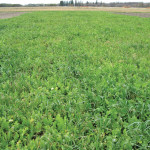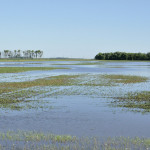
Tag Archives Agronomy

Manitoba Pulse and Soybean Growers staffs up for summer
Three temporary additions to the staff roster will give MPSG the ability to deliver more services over the summer

Farmland. They never stopped making it
Manitoba Crop Report and Crop Weather report: No. 2
Conditions as of May 9, 2016

Editorial: Balancing wheat research

Cover cropping – tips of the trade
Cover crop grower Gabe Brown says the best place to start when designing a species mix is to understand what your field needs and find the species that best addresses those issues

Healthy soils mean a sustainable future
Causes, consequences of and solutions to soil erosion are always connected

Cover crops breaking out of livestock niche
Benefits of cover crops shown to accrue to grain portion of mixed operations, causing some without livestock to consider them

A wet cycle has caused some farmers to rethink zero till
Seeding & Tillage Focus: As the province’s wet cycle appears poised to break, soil compaction is a lingering after-effect

Eight tips for growing flax
Agronomy researcher Chris Holzapfel shares what he’s learned about growing flax

Careful management key to keeping clubroot level low in province
Experts call for soil testing, scouting and diligent rotations to keep clubroot at low levels


